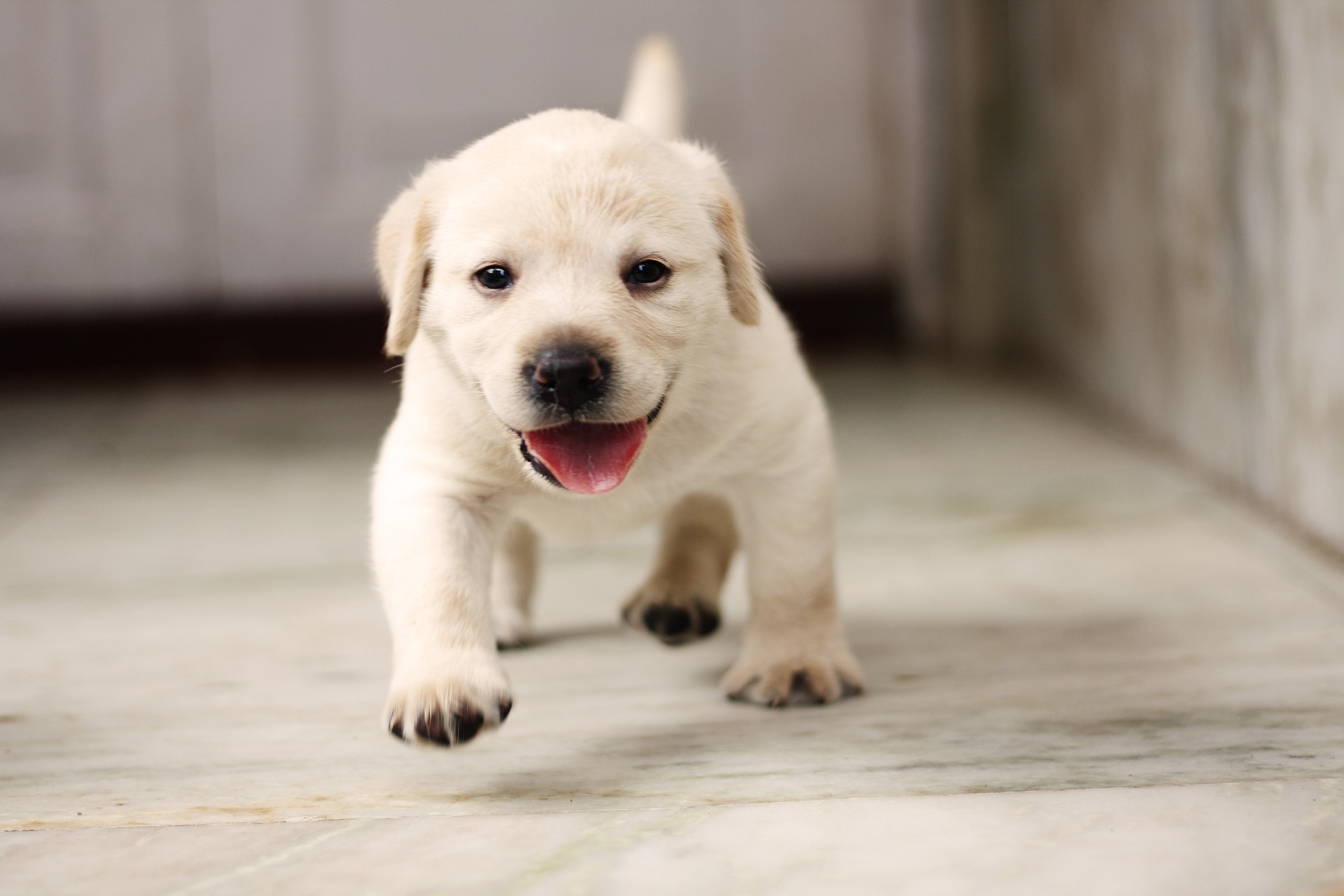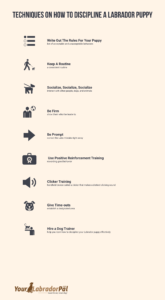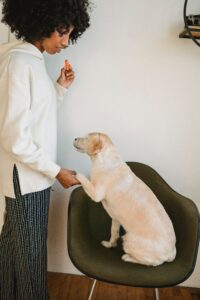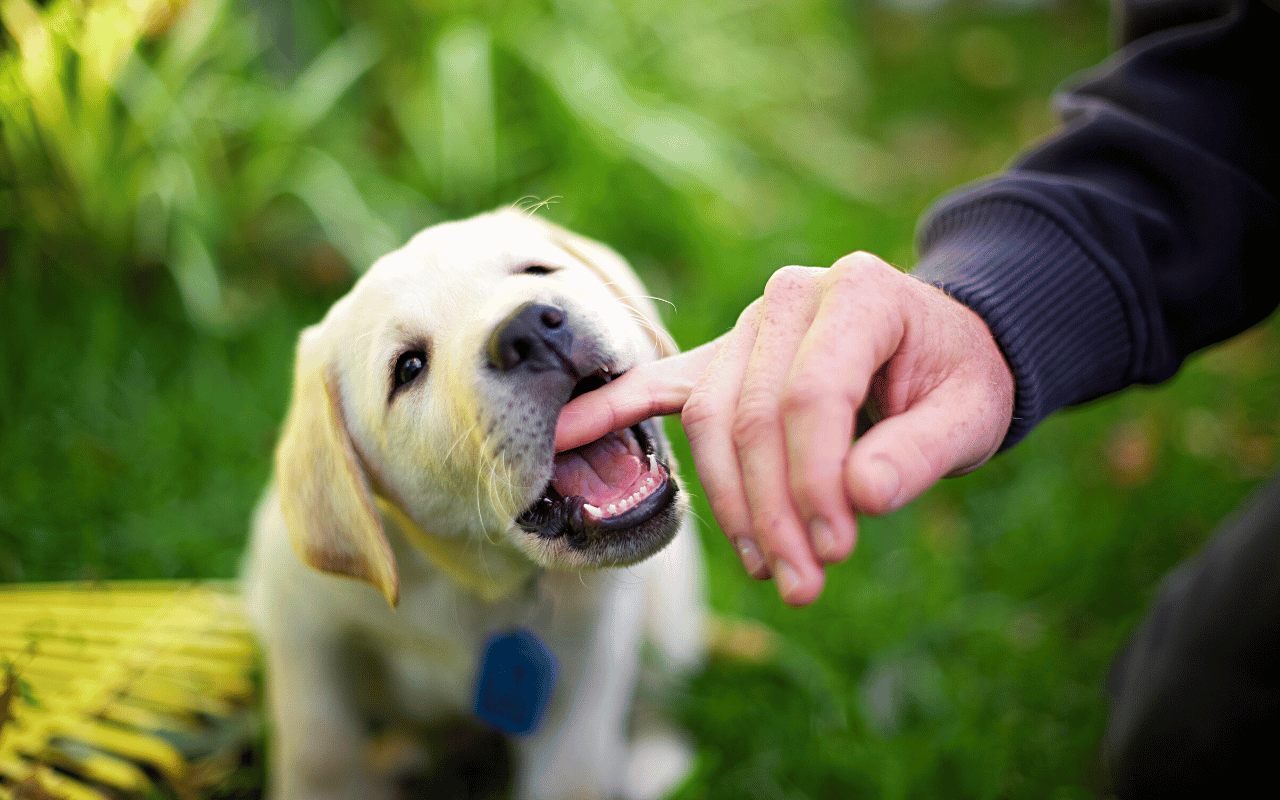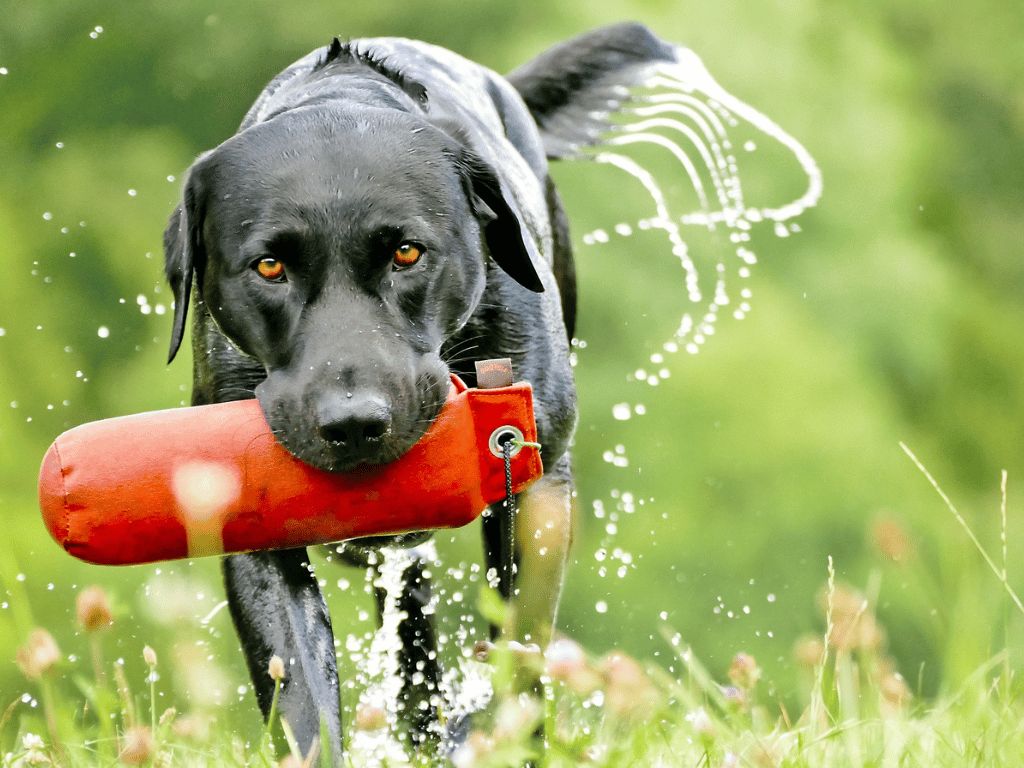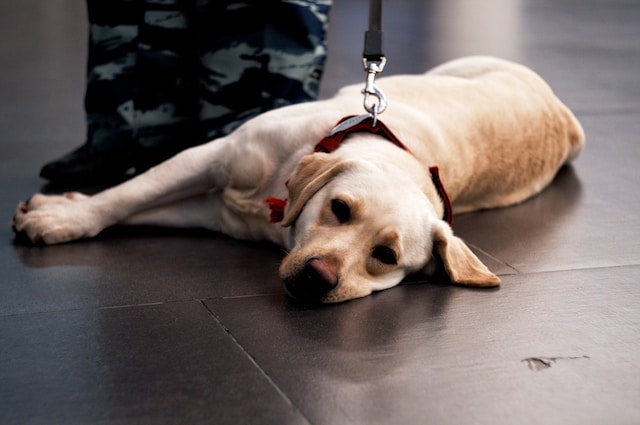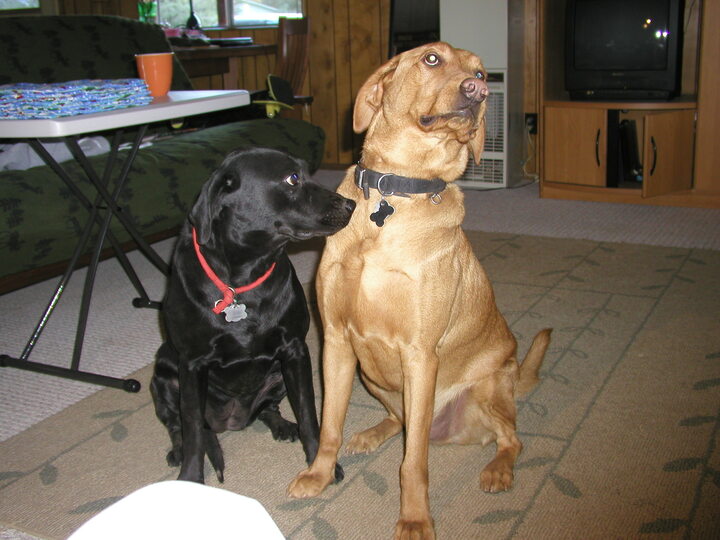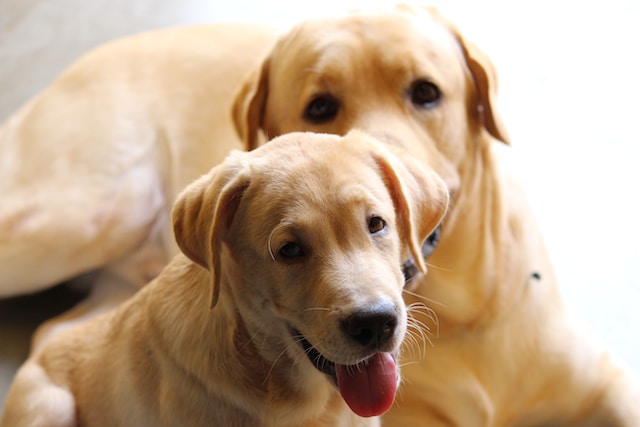How To Discipline A Labrador Puppy
So you just got yourself a playful little Labrador puppy, and you’re excited to add him to your family. You’ve anticipated late-night cuddles, long walks in the park, and lots of playful fetch sessions. But with this new add-on comes great responsibility, and one question that is undoubtedly crossing your mind is: how to discipline a Labrador puppy?
But before we get right into the ways of disciplining your new furry friend, let’s talk about what discipline actually means. Some people associate discipline with punishment or corrections, but in reality, it’s all about teaching a dog right from wrong. It’s teaching them how to behave and respond to different situations. By disciplining your Labrador puppy, you’re setting rules and boundaries to create a healthy relationship with your furry friend.
Now, let’s get into the ways to discipline your Labrador puppy.
Common Puppy Behavior Problems
Common puppy behavior problems are a completely normal part of raising a young dog. Your Labrador puppy may be acting out because he’s still learning the ropes and testing his boundaries. Some of the most common puppy behavior problems include:
🐶 Barking
Labrador puppies are known to be talkative, and it’s not uncommon to hear them bark regularly. However, excessive barking can be a problem for both the puppy and its owners. If you have a Labrador puppy at home, don’t be surprised if they bark at everything, from the mailman to the family cat.
As they grow and explore the world, they may bark excessively due to anxiety, fear, or just plain excitement. It’s important to understand that this is normal behavior for puppies, but it can become problematic, especially if they are barking at inappropriate times or disrupting your daily routine.
Aside from the inconvenience, excessive barking can also indicate underlying issues. Labrador puppies may bark when they feel scared, frustrated, bored, lonely, or seek attention. If not addressed, these issues can lead to long-term problems such as aggression, destructive behavior, and anxiety.
🐶 Nipping or Puppy Biting
One reason puppies tend to nip, or bite is simply because it’s their way of interacting with the world around them. Puppies like to use their mouths to explore, and they have yet to learn what is appropriate and what’s not.
Additionally, they may nip or bite when they feel scared, stressed, or overwhelmed. It’s important for puppy owners to understand that this is a natural behavior, and they should be patient and consistent in guiding their puppies toward better habits.
🐶 Chewing
Labrador puppies are cute and cuddly and have an irresistible urge to chomp on everything in sight. Their chewing habit might be endearing at first, but soon enough, it becomes a real headache for their owners. Puppies explore their environment with their mouths, and chewing is a natural part of their development. They must gnaw on objects to relieve teething pain and develop strong jaw muscles.
However, chewing can become problematic when puppies start biting on everything they can find, including shoes, furniture, and electrical cords. This negative behavior isn’t just destructive and costly and can endanger the puppy’s health and safety.
🐶 Separation Anxiety
Separation anxiety is often triggered when you leave your dog alone for extended periods. This is because dogs are packed animals and need social interaction to thrive. It’s not uncommon for a Lab puppy to feel alone, abandoned, and anxious every time its caretaker leaves the house. These feelings cause the pup to engage in destructive behavior to cope with the stress.
🐶 Pooping and Peeing in the House
Another common behavior problem that puppies tend to present with is the dreaded house pooping and peeing. It’s not necessarily the most glamorous topic to talk about, but let’s be real: it’s a problem that many new puppy owners face, and it can seem like there’s no end to the messes that need cleaning up.
So, what’s causing this bad behavior, you may ask? Well, it could be several things – from your pup not yet understanding that the house is not their personal toilet to a medical issue or simply not being taken out often enough. Whatever the reason, it’s important to understand that this is a common issue many puppy parents go through, and solutions are available.
Techniques On How To Discipline A Labrador Puppy
Any dog owner knows being a puppy parent is not always easy. And when it comes to Labradors, their energy and love for mischief can sometimes lead to some… let’s just say, less-than-desirable behaviors. That’s where discipline comes in.
Disciplining your Labrador puppy is not about punishment. It’s about teaching them right from wrong and keeping them safe. And lucky for you, there are some effective techniques to help you do just that.
⇨ Write Out The Rules For Your Puppy
One common approach to discipline is to write out the rules for your puppy. This involves creating a list of acceptable and unacceptable behaviors and then enforcing them consistently.
Writing out the rules for your puppy is a simple yet valuable technique to help your Labrador understand what behaviors are expected of them. This can include things like not jumping on people, not chewing on furniture, and always listening to your commands. By creating a clear set of rules and consistently enforcing them, your puppy will quickly learn what’s expected of them and what’s not.
For example, if your Labrador is constantly jumping on people, you could write out that “jumping on people is not allowed” and then consistently redirect your puppy to sit and wait instead. Over time, your puppy will learn that jumping on people is unacceptable and will instead default to sitting politely when greeting guests.
⇨ Keep A Routine
Routines are essential for puppies as they need consistency to build good habits. You can start by setting a schedule for tasks such as feeding, walks, playtime, and sleep. Keeping a consistent routine will teach your puppy when to expect certain activities, which will make them feel more secure and less anxious.
An example of this in practice is to feed your puppy at the same time and place each day. This routine will train your puppy to expect their meals during specific times and avoid them asking for food outside those times. Moreover, it can create a relaxed atmosphere that can encourage your puppy to eat more leisurely.
⇨ Socialize, Socialize, Socialize
Socialization is exactly what it sounds like – allowing your little furry friend to interact with other people, dogs, and animals. This helps them build confidence, learn proper behavior, and get used to different situations. It’ll make them much more well-adjusted as they grow up.
When socializing your Labrador puppy, start small – maybe a visit to a friend’s house or a quick trip to the park. Gradually increase the duration and complexity of these social situations to keep them engaged and challenged. The goal is to help them learn how to interact appropriately and understand what’s expected of them. This way, they’ll grow up to be happy and relaxed around others.
⇨ Be Firm
Imagine a child testing their boundaries; the best way to teach them discipline is to be firm and show them love and care. The same goes for Labrador puppies, they are playful and energetic creatures who love to test boundaries, but it’s important to show them who the leader is, and that is you.
Being firm doesn’t mean being aggressive or harsh with your puppy. It means showing them that certain behaviors are not acceptable. For instance, if your puppy starts chewing on your furniture, scold them in a firm tone of voice and quickly replace the item with a toy or treat that they are allowed to chew on.
Consistency is key when teaching discipline, so make sure you are firm every time your puppy misbehaves.
⇨ Be Prompt
What do I mean by a prompt? Well, it simply means that when your little furry friend does something that it shouldn’t be doing, you should correct it right away.
For instance, if your pup starts chewing on your favorite pair of shoes, you shouldn’t wait until they destroy them completely before punishing them. You should stop them and tell them firmly that what they’re doing is not okay. It’s the same if they start biting, barking excessively, or jumping on people. The key is to be quick about it.
The reason why being prompt is so effective is that dogs tend to forget what they’ve done wrong after a few seconds. So if you wait too long before you discipline them, they won’t understand why they are being punished.
⇨ Use Positive Reinforcement Training
Positive reinforcement is all about rewarding good behavior instead of punishing bad behavior. Here’s how it works. Whenever your pup does something good, like going to the bathroom outside or learning a new trick, be sure to give them a lot of praise and affection.
You can even give them a small treat, like a piece of kibble or a training treat. This positive feedback should help reinforce the good behavior and encourage them to continue doing it.
On the flip side, if your pup does something bad, it’s important not to punish them but instead redirect their behavior towards something positive. That way, they’ll associate good behavior with rewards and continue to be on their best behavior.
Positive reinforcement can take a little bit of time and effort, but in the long run, it’s worth it. Your pup will develop a strong bond of trust and respect with you, making them more likely to follow your commands and stay out of trouble. Plus, who doesn’t love seeing their furry friend wagging their tail with joy after receiving a treat or a belly rub?
So, if you’re struggling with disciplining your new Lab puppy, try positive reinforcement technique and watch your pup blossom into a well-behaved and happy companion.
⇨ Clicker Training
Clicker training is a fun and effective way to discipline your Labrador puppy without using physical punishment or aggression. The method works by using a small handheld device called a clicker that makes a distinct clicking sound when pressed. This sound communicates to your dog that they have done something right, and a reward will follow.
To begin, simply click the device when your puppy performs a positive behavior, such as sitting on command or coming when called. Immediately follow the click with a treat or praise. The clicker’s sound becomes associated with good behavior and rewards, so eventually, your Lab will start to perform these behaviors on command.
Clicker training also helps reinforce the bond between you and your pup since it involves frequent interactions and positive communication.
⇨ Give Time-outs
When using time-outs, it’s important first to establish a designated area where your puppy can be temporarily isolated, such as a crate or gated area. When your Labrador retriever puppy misbehaves, calmly and firmly state a command such as “no” or “stop” before quickly leading them to their time-out area without any form of attention or praise.
It’s important to maintain a consistent amount of time spent in the time-out area, starting with just a few minutes and gradually increasing as necessary.
While it can be difficult to discipline a new puppy, the use of time-outs can be an effective technique to discourage bad behavior in the future. By remaining calm and consistent and ensuring that your puppy is given clear feedback on acceptable behavior, you can help your new furry friend learn the necessary skills and manners to thrive in their new home.
⇨ Hire a Dog Trainer
A dog trainer is a certified professional who specializes in training dogs. They use various techniques to help teach your puppy obedience and good behavior. By hiring a dog trainer, you can have peace of mind knowing that your furry friend is in good hands. A dog trainer can assess your puppy’s behavior, identify what needs to be corrected, and recommend the best training regimen for your puppy.
Hiring a dog trainer can also help you learn how to discipline your Labrador puppy effectively. They can give you tips and advice on how to deal with your puppy’s behavior, such as barking or biting.
Plus, investing in a professional dog trainer can save you time and money in the long run. Your puppy will learn good behavior faster, and you won’t have to replace chewed furniture or pay for repairs caused by your fur baby.
So, if you want to ensure your Labrador puppy grows up to be well-behaved, consider hiring a dog trainer.
Common Mistakes To Avoid
When disciplining your Labrador puppy, it’s easy to make mistakes that can have long-term consequences. Therefore, avoiding these common mistakes is important when teaching your pup good behavior.
❎ Yelling or Intimidating
When disciplining your lab puppy, it’s important to understand that yelling or intimidating your furry friend is not the way to go. Sure, you may feel frustrated when your puppy just won’t listen or keeps making the same mistakes repeatedly, but shouting or scaring them into submission is not the answer. In fact, it can even make things worse.
You see, lab puppies are smart but also sensitive creatures that look to their humans for guidance and approval. If they sense that you’re angry or upset with them, they may become fearful or anxious, leading to even more bad behavior. Instead of yelling or intimidating, try to stay calm and patient with your pup.
❎ Physical Punishment
Another common mistake that many puppy owners make is using physical punishment to discipline their furry friend. This is a big no-no in the dog training session because it is ineffective and can also be harmful to your pup. Here’s an example to illustrate how physical punishment can cause more harm than good.
Let’s say your lab puppy chews up your favorite pair of shoes. You come home, see the damage, and in a fit of anger, you grab your pup by the scruff and yell at him. Not only will your pup be scared and confused, but he may also associate you and your anger with the destruction of your shoes rather than his own behavior. This can lead to fear and anxiety, making future puppy training even more difficult.
❎ Shock and Electronic Fence Collars
Disciplining your new Lab puppy can be a challenging task, but resorting to shock and electronic fence collars is a common mistake that many new dog owners make. While these methods may seem like effective ways to control your pup’s behavior, they can actually cause more harm than good.
Firstly, these collars work by delivering a mild electric shock to your dog’s neck, which can be extremely painful and scary for them. This kind of negative reinforcement can damage the trust and bond between you and your furry friend, leading to anxiety and fear.
Secondly, the use of shock and electronic fence collars can also cause physical harm to your pup. In some cases, the shocks can cause burns, and repeated use can cause long-term damage to their physical and mental well-being.
❎ Reinforcing Unwanted Behavior
Reinforcing unwanted behavior means giving your pup attention or treats when they’re doing something wrong. For instance, say your lab is barking up a storm outside, and you decide to yell at them to keep it down. What happens next? Your pup gets rewarded with attention – even negative attention is still attention – which means they’re more likely to repeat that undesirable behavior in the future.
The same thing goes for other unwanted behaviors, like biting, jumping up, or digging. It might be tempting to scold your pup or give them treats to distract them, but that just reinforces the behavior you want to stop.
It’s important to remember that consistency is key when it comes to discipline, and that means not rewarding your pup for doing things you don’t want them to do. Trust me, it can be tough, but it’s worth it in the end!
❎ Being Inconsistent With Cues
One of the most common mistakes that new puppy parents make is being inconsistent with their cues. Okay, so what does that mean? Imagine this scenario: your little Lab pup is jumping up on you, trying to get your attention. You push her down and say, “No jump!” Then, a few minutes later, she does it again.
And this time, you laugh and give her some love instead of scolding her. Can you see the problem here? Your pup is confused! She doesn’t understand why sometimes jumping is okay, and sometimes it’s not.
When it comes to raising a Labrador retriever puppy, consistency is key. Your pup needs to know exactly what you expect from her and when. If you’re consistent with your cues and discipline, your pup will know what she’s supposed to do. That’s why it’s important to establish clear expectations and enforce them every time.
❎ Impatience and Lack of Understanding
It can be easy to forget that your pup is just a baby and still learning the ropes. That’s why it’s so important for new puppy parents to remain patient and understanding. It takes time, consistency, and lots of love to teach your pup desirable behavior, so don’t expect them to be perfect overnight.
Impatience can cause a lot of frustration for both you and your pup. If you become too angry or frustrated, it will make matters worse. Instead, take a few deep breaths and remember to be patient with your pup. Understand that they are still learning and will make mistakes along the way. With patience and understanding from you, your pup will learn the ropes in no time.
Frequently Asked Questions
Q: Does an older dog need the same kind of training as a puppy?
While both age groups can benefit from obedience training, some key differences exist. For instance, a puppy has a blank slate, so to speak, and is learning everything from scratch. On the other hand, an older dog may have developed some bad habits that need to be addressed over time. Additionally, older dogs may have physical limitations that need to be considered during training. That being said, there is always time to start training an adult dog and helping them live its best life.
Q: What is a bite inhibition program?
A bite inhibition program is training for puppies or dogs who tend to nip or bite. It’s all about teaching them to control the force of their bites so that, even if they do end up biting someone, they won’t cause serious harm. See, dogs naturally use their mouths to explore the world around them. But sometimes, they don’t realize how strong their jaws can be and may accidentally hurt someone. That’s why a bite inhibition program can be a crucial part of training; it helps dogs understand how to regulate their biting to keep everyone safe and happy.
Q: What are some tips to prevent destructive chewing in dogs?
Firstly, make sure your pup has plenty of appropriate chew toys. This will give them an outlet for their natural chewing behavior without wreaking havoc on their belongings. Secondly, create a safe space for your dog when you can’t supervise them. This could be a crate or a designated room where they feel comfortable and don’t have access to items they can destroy. Lastly, make sure your dog is getting enough exercise and mental stimulation. A bored dog is more likely to chew out of frustration or anxiety.
Q: How can obedience training and mental stimulation benefit a dog’s overall well-being and enhance its behavior?
Obedience training not only helps to teach your dog basic commands, but it also builds trust and respect between you and your furry pal. Mental stimulation is just as vital, as it helps keep your dog’s brain active and reduces destructive behavior associated with boredom. Plus, it’s just plain fun to watch your furry friend engage in new activities and challenges!
Q: As a pet owner, how do I ensure my pup gets the daily exercise they need?
A great way to ensure that your pup gets the exercise they need is to make it a part of your daily routine. Take your furry friend for a morning or evening walk, play a game of fetch in the backyard, or head out to the local dog park for some off-leash fun. Not only will your pup get the exercise they need, but you’ll also benefit from some quality bonding time. Plus, nothing beats the feeling of a happy and healthy pup by your side.
Final Words
Disciplining a Labrador puppy can be a challenging task, but they must learn the right habits early on. Remember that consistency and patience are key. Make sure that everyone in the household is on board with the same approach to disciplining the puppy to prevent confusion and misunderstanding.
Positive reinforcement, like treats, praise, or toys, should be used for good behavior, while negative reinforcement, like a stern voice, should be used sparingly for disobedience and never physical punishment. Remember that your Lab puppy will love to please you, so celebrate successes and don’t be too hard on them when they make mistakes. With proper discipline and training, your Labrador puppy can grow up to be a well-behaved and happy companion.

